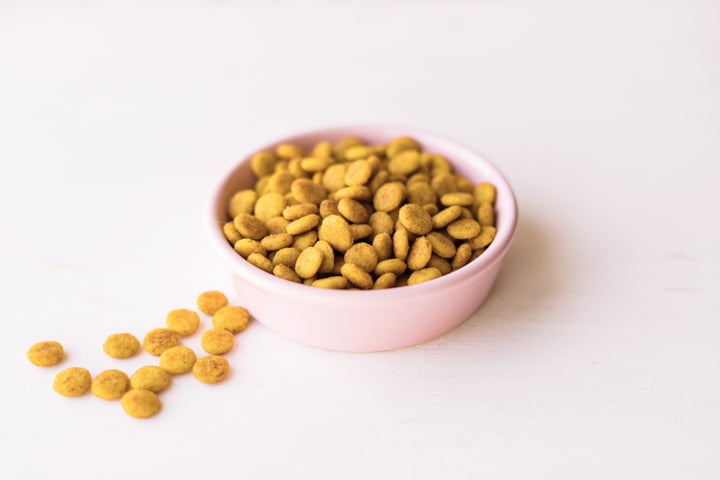
Don’t get me wrong ― I’m one of those people who loves autumn. Orange leaves? Cold air? Thick jumpers? Sold, sold, and sold.
But if you’ve got a garden, you’ve probably noticed that the cold weather has already started taking its toll on the wildlife in your garden.
Whether you suspect rats, mourn your autumn bounty, or simply hate knowing that bats and birds struggle to find food in the colder months, there’s no doubt that the chilly seasons have their downsides.
Hedgehogs in particular can suffer as the weather turns. Hoglets (baby hedgehogs) can be born as late as September, meaning they’re way too small to cope well with the harsher climes.
Even fully-grown hedgehogs struggle to find food as the weather turns.
Thankfully, leaving out a plate of cat food can help ― here’s how to do it, and some other way to keep the hedgehogs in your lawn happy.
Why cat food?
Well, it can be meat-based dog food too (so long as it’s not fish-based). It’s a good option because it’s regulated, and it’s high-protein.
The hedgehogs’ usual diet consists of beetles, earwigs, caterpillars, worms, and fly larvae, says the Woodland Trust. So unless you’ve got loads of those to hand, meat-based cat food is probably your safest bet ― though you can buy specially-designed hedgehog food if you’re so inclined.
A very shallow dish or saucer is best, as hedgehogs are small and might struggle to reach food in steeper bowls. Consider leaving water out too ― leave both in a low-traffic area of your garden.
Avoid leaving out milk and bread, as hedgehogs are naturally lactose-intolerant and bread does almost nothing for them. Mealworms are also a no-no, says the Woodland Trust ― these can cause stomach upsets if eaten in large quantities.
Clean your offering’s dish outdoors daily with hot, soapy water and rinse well, says the RSPCA ― this is to prevent disease from spreading from one hedgehog to another. After all, some gardens will get visits from ten hedgehogs a night.
While the hedgehogs might get especially hungry as insect populations fall in autumn, the RSPCA and Woodland Trust both recommend leaving food and water out for the critters year-round.
That’s not the only way you can help
Of course, leaving a plate of meat-based cat or dog food or cat biscuits can provide a helpful booster to hungry hogs. But, like feeding sugar water to exhausted bees, it’s not meant to be a long-term solution.
One way you can help is by keeping a little bit of your garden grown out and unpruned ― overhanging bushes can provide warmth, a hiding place, and even a food source. Raking leaves into a pile rather than binning them can do the same thing.
That’s not just helpful as a quick fix; encouraging more insect life in your garden as part of a broader push to biodiversity is better for everyone (including you) year-round.
The RSPCA also recommends making “hedgehog highways” which give the critters ways into, and out of, your garden. “Try cutting holes in fences, removing bricks from walls, or digging tunnels under the garden boundary. Hedgehogs can travel through gaps as small as 13x13cm, so these gaps don’t need to be large,” they say.
Hedgehogs also need a safe place to rest and hibernate. So, it’s a good idea to buy, build, or repurpose a hedgehog home, or let them snuggle up in your log or compost piles or overgrown patches.
“Place the house in a quiet, shaded corner of your garden to have the best chance of a hog taking up residence,” The Woodland Trust advises.
And avoid slug pellets ― these can be harmful to a wide range of animals, and hedgehogs are one such unintended victim.
I mean, they’re simply too cute to go hungry...